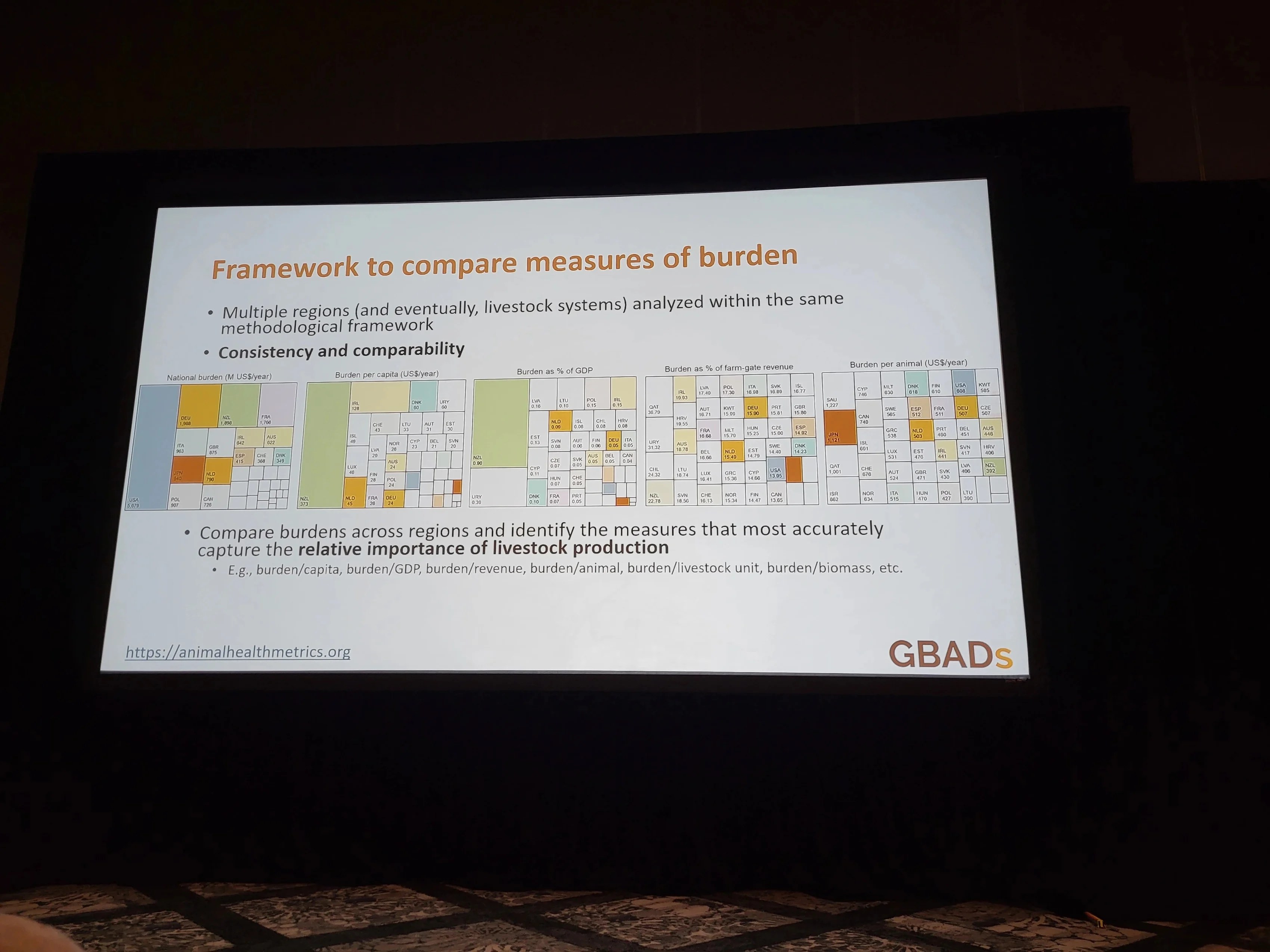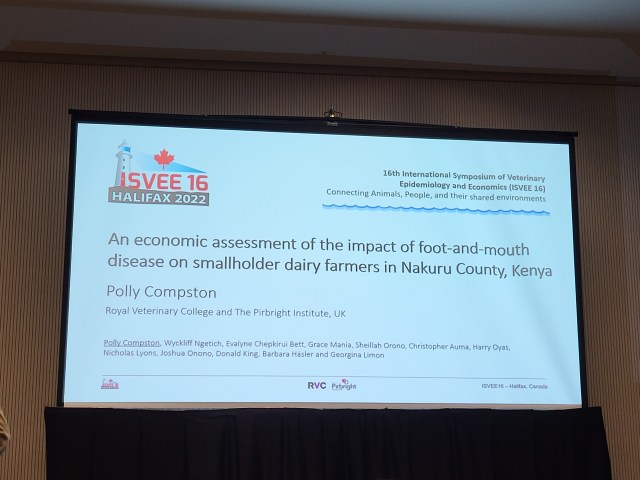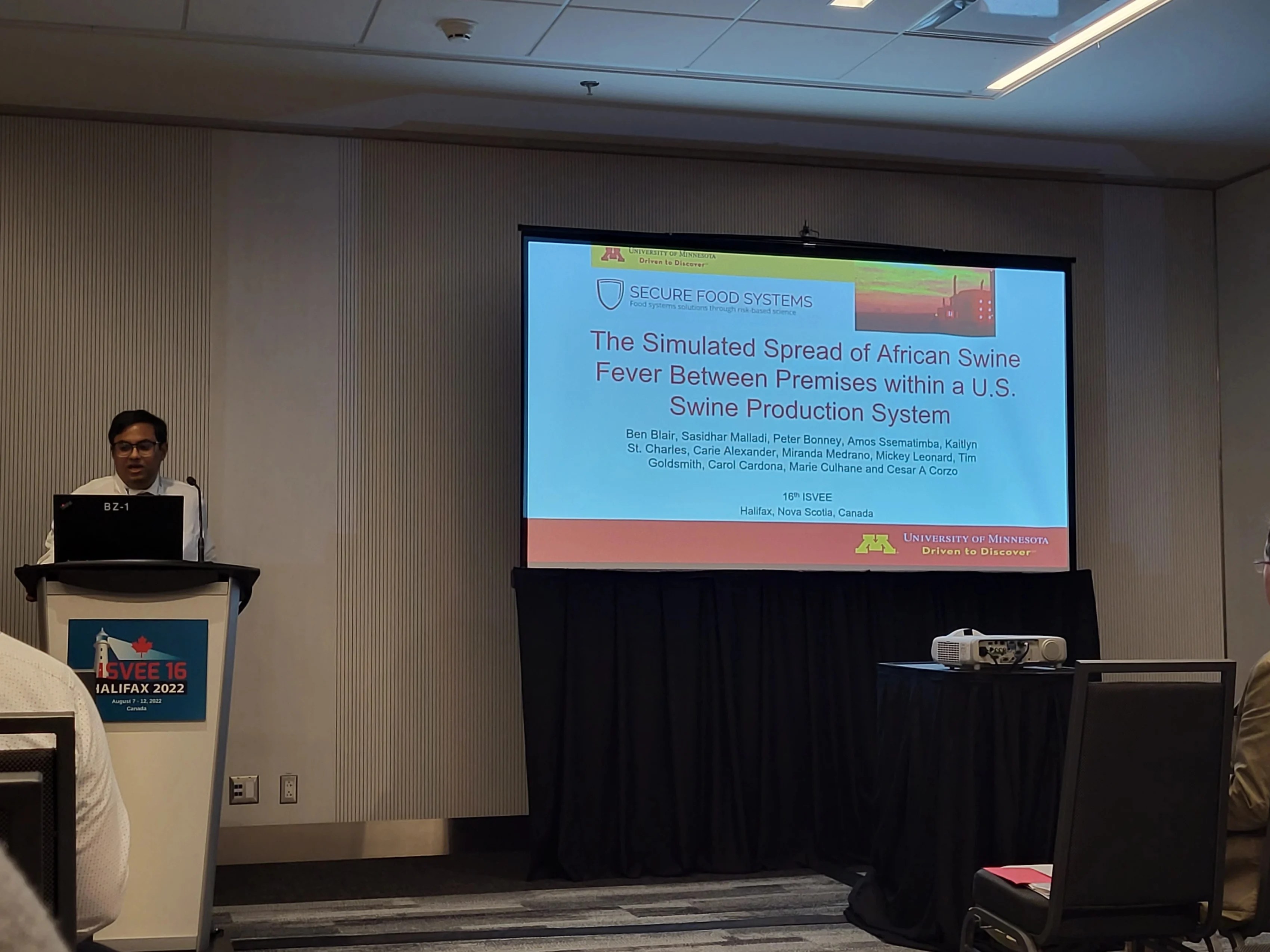Home \ Knowledge Hub \ Opinion \ International Symposium of Veterinary Epidemiology and Economics (ISVEE), Canada 2022


27 Sep 2022
International Symposium of Veterinary Epidemiology and Economics (ISVEE), Canada 2022
SHARE

RACHEL HERSCHMAN
Intern, International Veterinary Health MSD Animal Health
My name is Rachel Herschman and I have been an intern on the International Veterinary Health (IVH) team for three months. I attended the International Symposium of Veterinary Epidemiology and Economics (ISVEE) last month in Halifax, Canada from 7th August to 12th August 2022. The clear themes interwoven throughout the conference were the importance of having a diversity of evidence at hand, international collaboration, and having a One Health philosophy. ‘One Health’ is an approach that calls for interdisciplinary collaboration in recognizing how human health, environmental health, and animal health are interconnected. Understanding this interconnectedness across multiple points of view is thought to be the most optimal way to solve problems in these sectors.

The Global Burden of Animal Diseases
The Global Burden of Animal Diseases (GBADs) was one of the many shining organizations at ISVEE. Their talks focused on neglected zoonotic diseases (NZD), many of which disproportionally affect vulnerable groups in low/middle-income countries. Much of epidemiology depends on the availability and accessibility of large datasets, which often results in bias that can over and underprioritize diseases. One such example is Anthrax, a disease found to be the most prioritized in countries worldwide despite being estimated to have a very low disease burden. Therefore, GBABs is exploring graph databases and better data management frameworks to enable more data sharing and reportability.


Mortality does not do a great job of capturing the total amount of damage a disease causes. Biomass and economic values were shown to be valuable denominators for disease burden estimates. Using these variables requires large amounts of data and discussion but can yield insightful measures such as the Animal Health Loss Envelope (AHLE). The AHLE can be broken up and attributed to specific causes using complex methodologies. Using this tool can formalize the relationship between health risks in livestock production.



Foot and Mouth Disease

The panel discussion and Q&A segment of “Modeling Approaches to Support Progressive Control and Eradication of Transboundary Animal Diseases, with a Focus on PPR and FMD” touched upon the importance of data availability and strategies to discuss modelling to non-scientific officials.
Main points:
- The absence of a rich database for Peste des Petits Ruminants (PPR), can lead to overlooking uptake issues in vaccination program.
- Discussions with non-scientific officials must be a participative process where there is ownership and belief in modelling tools.
- It might even be beneficial to have a dedicated member to present the outcomes of a model, instead of the person who built the model, so that the information can be distilled into simple messaging.

Avian Influenza
China’s yellow boiler industry has been understudied with no prior research on the chickens before going to market, and current Avian Influenza (AI) control policy does not consider the unique ways yellow broilers are reared. A value chain analysis of this sector in Guangxi, China (Tang, et al., 2021) identified the use of trading platforms as a key point for targeted intervention to prevent the spread of H7H9 (Asian Lineage Avian Influenza A) to other birds and people. Contracted broiler farmers, used extensively in this region, send their market-weight chickens to trading platforms before they are transported to live bird markets to be sold to the public.


Lumpy Skin Disease
One of the most anticipated talks of the conference was on the qualitative assessment of the probability of introduction and onward transmission of Lumpy Skin Disease (LSD) in Ukraine (Farra, et al., 2022). LSD was detected in Russia in 2015, suspected to have been introduced via the Balkans. Instability in Ukraine this year could make LSD’s introduction into the country a real possibility. Qualitative risk assessment analysis showed that the highest risk for LSD introduction was the illegal importation of cattle and that a strong legal framework was associated with the least risk. Local experts included veterinary authorities, field veterinarians, and academics from universities. The report was received well in Ukraine and is being used to revise strategies in place and to better understand the introduction pathways.

African Swine Fever




Rabies

Veterinary Education



RACHEL HERSCHMAN
Intern, International Veterinary Health MSD Animal Health
The views expressed in this article are those of the author(s) and do not necessarily represent those of MSD Animal Health.

